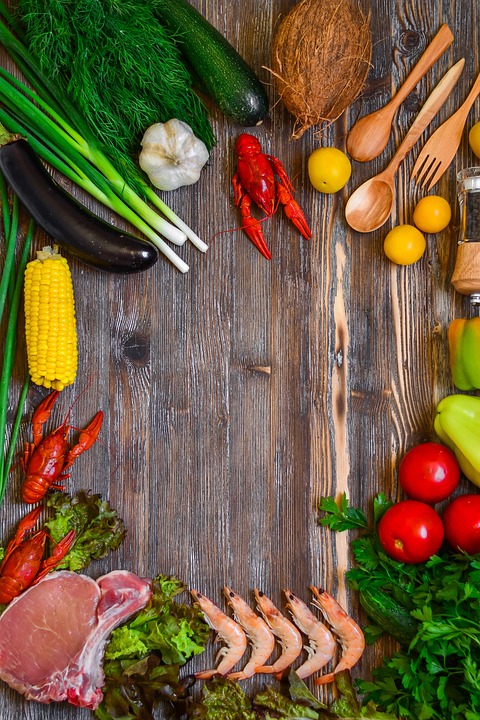Soft Foods After gastric bypass: A Guide to Post-Surgery Eating
Introduction
After undergoing gastric bypass surgery, it is crucial to follow a specific diet plan to ensure successful weight loss and maintain optimal health. One important phase of this diet is the soft foods stage, which typically begins two to four weeks after the surgery. In this article, we will explore the benefits of soft foods, provide a comprehensive list of suitable options, and offer helpful tips to make this phase easier and more enjoyable.
The Benefits of Soft Foods
Transitioning to soft foods after gastric bypass surgery is an essential step in the recovery process. These foods are easy to chew, swallow, and digest, minimizing the strain on the newly formed stomach pouch. By consuming soft foods, you can ensure that you meet your nutritional needs while avoiding complications such as blockages or discomfort. Additionally, soft foods are less likely to cause dumping syndrome, a condition characterized by rapid gastric emptying that can lead to nausea, diarrhea, and other unpleasant symptoms.
Recommended Soft Foods
During the soft foods phase, it is important to focus on nutrient-dense options that are easy to digest. Here are some soft food choices that are generally well-tolerated after gastric bypass surgery:
1. Protein-rich options: Soft-cooked eggs, tofu, cottage cheese, Greek yogurt, and lean ground meats are excellent sources of protein. Protein is crucial for muscle repair and growth, as well as the maintenance of a healthy immune system.
2. Cooked vegetables: Steam or boil vegetables such as carrots, green beans, peas, and squash until they are tender. These provide important vitamins, minerals, and fiber.
3. Mashed fruits: Applesauce, mashed bananas, and pureed peaches are flavorful options that provide essential vitamins and antioxidants.
4. Soups and broths: Opt for clear or pureed soups, such as chicken or vegetable broth, tomato soup, or pureed vegetable soups. These help maintain hydration and provide necessary nutrients.
5. Soft grains: Cooked rice, oatmeal, quinoa, and couscous are gentle on the stomach and provide energy through carbohydrates.
Tips for a Smooth Transition
Transitioning to a soft foods diet after gastric bypass surgery can be challenging. However, with a few tips, you can make the process easier and more enjoyable:
1. Gradual progression: Start with small portions of soft foods and gradually increase the amount over time. This will allow your stomach to adjust to the new textures and reduce the likelihood of discomfort.
2. Consistency and texture: Ensure that the soft foods you choose have a smooth and creamy consistency. Avoid foods with chunks or fibrous textures that may irritate the stomach.
3. Chew thoroughly: Although soft foods are easier to chew than solid foods, it is essential to take your time and chew each bite thoroughly. This aids digestion and prevents any potential blockages.
4. Stay hydrated: Drink plenty of water and clear fluids between meals to maintain hydration. This is particularly important during the soft foods phase, as many soft foods have a high water content.
5. Seek professional guidance: Consult with a registered dietitian who specializes in post-Bariatric surgery nutrition. They can provide personalized advice and ensure that you are meeting your nutritional needs during this phase.
Incorporating Variety and Nutritional Balance
While the soft foods phase may initially seem restrictive, it is essential to incorporate variety and maintain nutritional balance. Here are some ideas to help you achieve this:
1. Experiment with flavors: Enhance the taste of soft foods by adding herbs, spices, or low-sodium seasonings. This will prevent monotony and make your meals more enjoyable.
2. Explore different cooking methods: Try steaming, boiling, baking, or blending to create diverse textures and flavors. For example, pureeing cooked vegetables can provide a creamy texture without compromising nutritional value.
3. Focus on protein: Ensure that each meal contains a good source of protein to support muscle repair and prevent muscle loss. This can include soft-cooked eggs, pureed chicken, or protein-rich shakes.
4. Monitor portion sizes: Even though soft foods are easier to eat, it is important to maintain portion control to avoid overeating. Use smaller plates or bowls to help manage your portions effectively.
5. Take your time: Eating slowly and mindfully allows you to savor each bite, aids digestion, and helps you recognize feelings of fullness. This can prevent overeating and promote a healthier relationship with food.
conclusion
The soft foods phase after gastric bypass surgery is a critical step in the journey to successful weight loss and improved health. By incorporating a variety of nutrient-dense and easy-to-digest options into your diet, you can ensure that you meet your nutritional needs while enjoying a diverse range of flavors. Remember to consult with your healthcare team or a registered dietitian to personalize your diet plan and make the Most of this important phase.
Faqs Concerning Soft Foods After Gastric Bypass
What are soft foods?
Soft foods are foods that have a tender, smooth, or easily mashed texture, making them easy to consume and digest. These foods are often recommended for individuals who have undergone gastric bypass surgery or other similar procedures. They provide essential nutrients while being gentle on the stomach and digestive system.
The three most important information about soft foods are:
1. Soft foods have a texture that is easy to consume and digest.
2. They are recommended for individuals who have undergone gastric bypass surgery.
3. Soft foods provide essential nutrients without putting strain on the digestive system.
Why are soft foods important after gastric bypass?
After gastric bypass surgery, the stomach undergoes significant changes, and the digestive system needs time to heal and adjust. Soft foods are important during the initial recovery phase because they are easier to tolerate and less likely to cause discomfort or complications.
The three most important information about the importance of soft foods after gastric bypass are:
1. Soft foods are easier for the stomach to tolerate after gastric bypass surgery.
2. They help in the healing and adjustment process of the digestive system.
3. Soft foods reduce the risk of discomfort or complications during recovery.
What are some examples of soft foods?
There are various soft food options that can be included in a post-gastric bypass diet. Some examples of soft foods include mashed potatoes, scrambled eggs, yogurt, cottage cheese, cooked vegetables, smoothies, pureed soups, and soft fruits like bananas or avocados.
The three most important examples of soft foods are:
1. Mashed potatoes
2. Scrambled eggs
3. Yogurt
How should soft foods be prepared?
Soft foods should be prepared in a manner that ensures they have a smooth and easily digestible texture. This may involve cooking, mashing, blending, or pureeing the foods. It is important to avoid adding excessive fat, spices, or seasoning that may irritate the stomach or lead to discomfort.
The three most important information about preparing soft foods are:
1. Soft foods should have a smooth and easily digestible texture.
2. Cooking, mashing, blending, or pureeing can be used to prepare soft foods.
3. Avoid adding excessive fat, spices, or seasoning to prevent stomach irritation.
How long should soft foods be consumed after gastric bypass?
The duration of consuming soft foods after gastric bypass surgery may vary depending on individual recovery progress and the guidance of a healthcare professional. In general, a post-gastric bypass diet may include soft foods for a few weeks to a couple of months before gradually transitioning to more solid foods.
The three most important information about the duration of consuming soft foods after gastric bypass are:
1. The duration varies for each individual and depends on their recovery progress.
2. Soft foods may be consumed for a few weeks to a couple of months.
3. Transitioning to more solid foods happens gradually after the soft food phase.
Misconceptions Concerning Soft Foods After Gastric Bypass
Introduction
Soft foods after gastric bypass are an essential part of the post-surgery diet. They provide the necessary nutrients while allowing the stomach to heal and adjust to its new size. However, there are several common misconceptions surrounding soft foods after gastric bypass that need to be addressed. This article aims to debunk these misconceptions and provide accurate information for individuals who have undergone gastric bypass surgery.
Misconception 1: Soft foods are all the same
One common misconception is that all soft foods are equal in terms of nutritional value and ease of digestion. However, this is not the case. Soft foods can vary greatly in terms of their nutritional content and how easily they can be digested. For example, a soft food like mashed potatoes may be high in carbohydrates and low in fiber, while a pureed vegetable soup can provide a wider range of nutrients. It is important for individuals to choose a variety of soft foods to ensure they are getting a balanced diet that meets their nutritional needs.
Misconception 2: Soft foods are only necessary immediately after surgery
Another misconception is that soft foods are only necessary in the immediate post-surgery period. While it is true that soft foods are crucial during the initial stages of recovery, they continue to play a vital role in the long-term success of gastric bypass surgery. Soft foods are easier to digest and can help prevent complications such as stomach irritation or blockages. Even after the initial recovery period, individuals are advised to incorporate soft foods into their diet to ensure they are getting the necessary nutrients while minimizing the strain on their digestive system.
Misconception 3: Soft foods are bland and unappetizing
Many people assume that soft foods after gastric bypass surgery are bland and unappetizing. However, this is far from the truth. While it is true that individuals need to avoid spicy and heavily seasoned foods in the initial stages of recovery, there are still plenty of flavorful options available. Soft foods can be prepared with herbs, spices, and other flavor-enhancing ingredients to make them more enjoyable. In fact, exploring new recipes and experimenting with different flavors can make the post-surgery diet more exciting and satisfying.
Misconception 4: Soft foods are only for weight loss
Some individuals mistakenly believe that soft foods after gastric bypass surgery are only meant for weight loss purposes. While it is true that soft foods can aid in weight loss by promoting portion control and providing nutrient-dense options, their benefits go beyond just shedding pounds. Soft foods also help individuals maintain a healthy weight by preventing overeating and promoting satiety. Additionally, they support the healing process and provide essential nutrients that aid in the recovery and overall well-being of the individual.
Misconception 5: Soft foods are not filling
Many people assume that soft foods after gastric bypass surgery are not filling and will leave them feeling hungry. However, this is not the case when a balanced diet is followed. Soft foods can be dense in nutrients and fiber, which contribute to feelings of fullness and satisfaction. By incorporating a variety of soft foods that are rich in protein, healthy fats, and complex carbohydrates, individuals can experience prolonged satiety and avoid unnecessary snacking or overeating. It is important to work closely with a healthcare professional or registered dietitian to ensure the diet is well-balanced and tailored to individual needs.
Soft Foods After Gastric Bypass
#gastric #bypass #surgery #important #follow #specific #diet #plan #ensure #proper #healing #minimize #complications #initial #stages #surgery #liquid #diet #recommended #progress #recovery #gradually #introduce #soft #foods #diet #examples #soft #foods #consume #gastric #bypass #surgerybr

